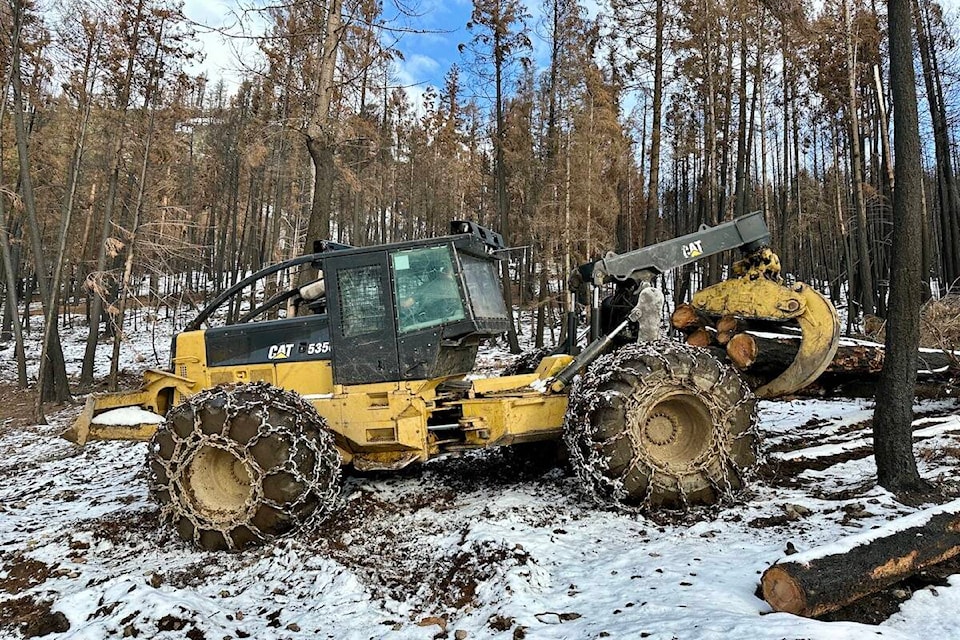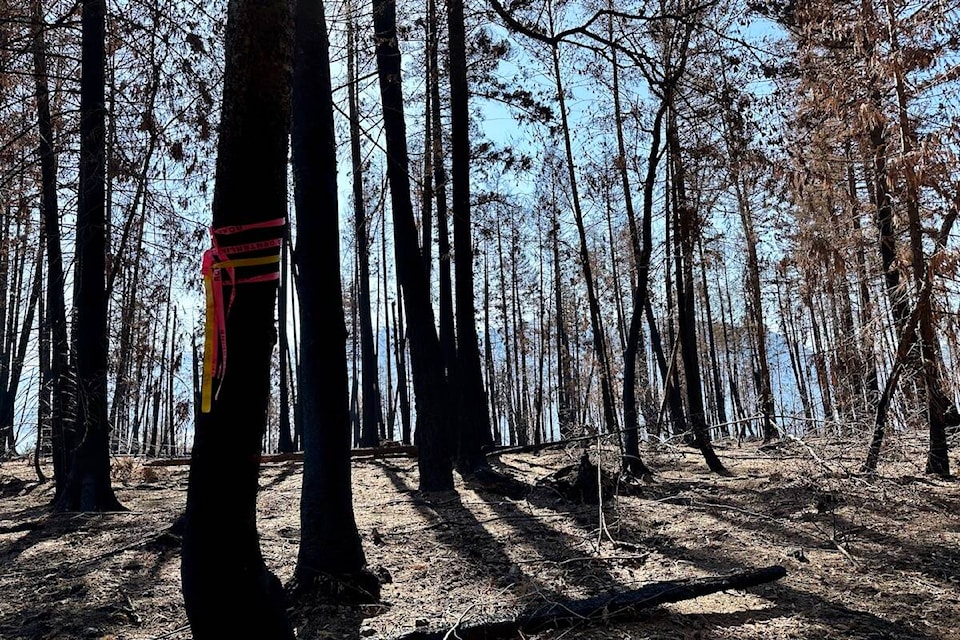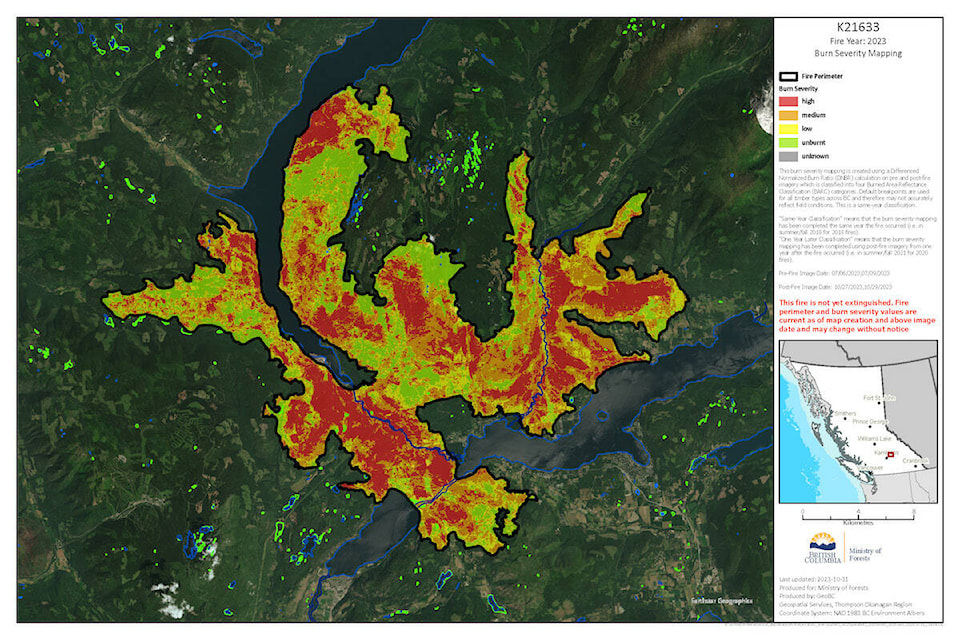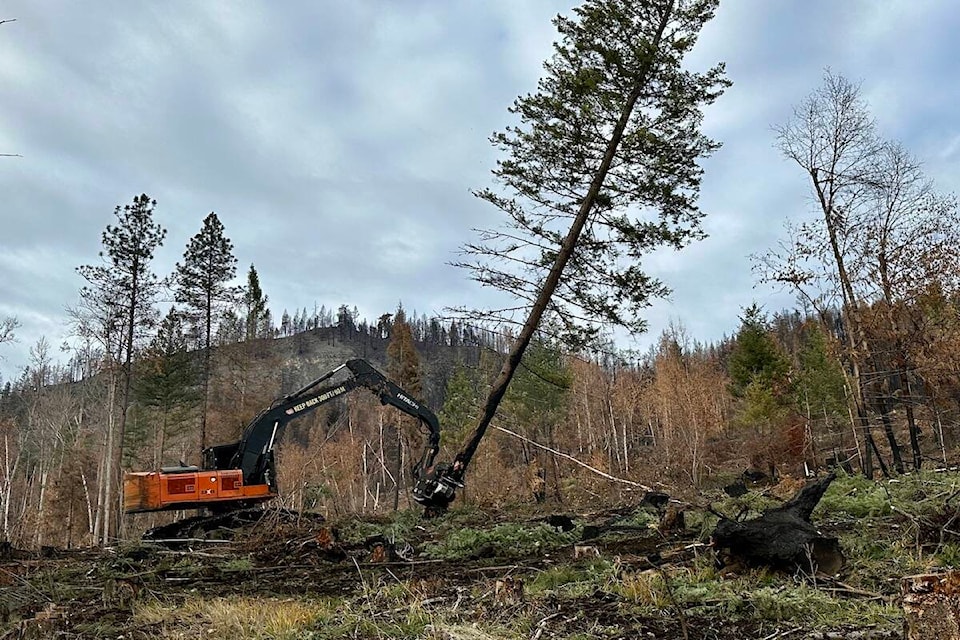Fed by extreme winds and extreme drought, the Shuswap Firestorm tore through thousands of hectares of forests leaving behind blackened sticks and fried soil, with nary a green leaf or stem where the fire was intense. The wildfire was indiscriminate, as it did not matter if the forests contained young trees, mature trees, old growth or had been “fire-proofed” by thinning and removal of lower limbs and dead stems, it all went up in smoke. Yet, somewhat miraculously, the fire did manage to skip around some plantations where the trees were large enough to achieve crown closure, which retained enough moisture on the ground to resist the flames.
There is now a rush to salvage log the burnt trees that are merchantable before the timber dries and splits, which renders the wood unusable for lumber and plywood. However, there is a growing amount of scientific literature and research that insists logging burnt forests is harmful to the ecosystem and it is far better to let natural processes bring the forests back as what happened after previous wildfires.
One of the major concerns with salvage logging, is the site disturbance caused by the heavy equipment that both disturbs and compacts the soil, which inhibits natural regeneration and often results in erosion and damage to streams. Logging requires additional roads and skid trails to be built that permanently remove land for the forest landbase and pose threats to wildlife. As well, logging can encourage the growth of weeds and invasive species.
Burnt trees can perform a key role in the future forest by providing habitat to many bird species that help control forest pests. As burnt trees age they eventually fall to become coarse woody debris that decomposes to replenish the soil, provide food and shelter for beneficial insects and create nutrients that assist the regrowth of the forest ecosystem. Salvage logging also disturbs the natural successional cycle that begins with plants and shrubs, followed by deciduous trees and then conifers.
Some studies show that the slash left after logging increases fuel loads to encourage more severe fires in the future. However, many foresters claim that leaving the burnt trees will add even more fuel resulting in hotter wildfires.
Despite the many ecological concerns, there are many benefits to salvage logging with the primary one being the time factor. All areas that are logged, will be planted with seedlings that get a boost from the nutrients in the ashes. Many of the roads and skid trails are rehabilitated and planted. Natural recovery can take many decades longer and where the fires were extreme, the seeds have been burnt and recovery will be delayed even more. Due to safety concerns, tree planting can only take place after logging.
There is also the issue of carbon sequestration. Without salvage logging, the burnt trees will slowly release carbon into the atmosphere for upwards of 100 years or more, whereas if the burnt timber is logged, much of the carbon is locked in as lumber and other building products. After salvage logging, as the young forest grows it becomes a carbon sink again helping to slow climate change instead of accelerating it.
Another key issue for the Shuswap is the aesthetic and recreational values that forests have for both residents and tourists. No one likes to look at burnt trees and the sooner these blackened sticks are replaced with a growing forest, the better. One can now see areas of the Shuswap that burned in 2003 that were not logged and replanted and today remain unproductive shrubland, whereas other areas that were replanted are now healthy, young forests.
Even though many hectares will be salvage logged, there will nonetheless be thousands of hectares that will remain untreated because they contained young forests that have no commercial value. Many of the burnt plantations that had not yet achieved “free-to-grow” status will be eventually replanted, but there could be significant delays due to the lack of available seedlings and funding considering the increased demand due to the massive number of hectares burned throughout the province in recent years.
Given the rapidly warming climate, the ongoing droughts, and the greater frequency of extreme weather events, ecosystem recovery will be a challenge regardless of whether salvage logging occurs, or it does not. We will all be witness to a massive experiment, as riparian areas, inaccessible slopes, and Tsútswecw Park, like all provincial parks, will likely remain “natural” burnt ecosystems that will serve as the control plot to compare with the crown and Skwlax lands that will be logged and replanted. We can all become citizen scientists by observing the regrowth of shrubs and trees in the logged areas and comparing it with the areas left “natural”.



